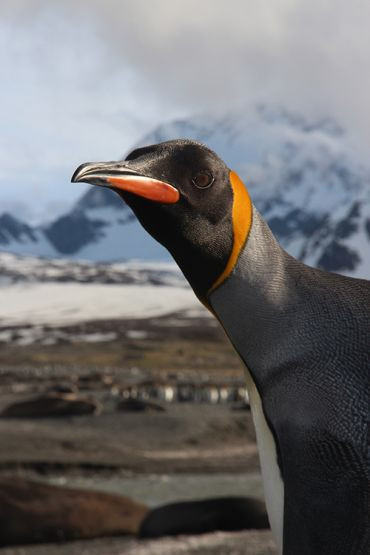Understanding the delicate balance of ecosystems in remote locations like Antarctica is crucial, especially when considering the impact of climate change, fishing, and human activities on vulnerable bird populations. Traditionally, monitoring these populations required expensive and logistically complex permanent scientific bases or long-term summer camps. However, groundbreaking advancements in remote-sensing cameras and innovative technologies are empowering scientists at Oxford University to gather essential data from afar. These researchers are also committed to sharing their pioneering techniques, enabling wider global conservation efforts.
Since 2010, Dr. Tom Hart and his dedicated team have been ingeniously utilizing opportunities aboard yachts and tour ships to access remote Antarctic sites. There, they deploy time-lapse cameras that diligently record penguin behavior throughout the year. These cameras are invaluable tools, capturing critical data such as the number of penguins arriving ashore to breed, the timing of breeding seasons, and the survival rates of penguin chicks. Furthermore, rapid image analysis allows scientists to track how long penguins spend at sea foraging for food, revealing crucial patterns and trends in their feeding habits across varying environmental conditions.
 Penguin
Penguin
The sheer volume of data generated by these cameras, sometimes reaching up to 500,000 images annually, presents a significant analytical challenge. To overcome this, Dr. Hart collaborated with physicists to create ‘Penguin Watch’, an innovative citizen science program hosted on the Zooniverse platform. Penguin Watch invites individuals worldwide to participate in vital research by viewing and classifying penguin images from the comfort of their homes. Participants simply click on and count the penguins visible in each image, contributing to a massive dataset while experiencing a virtual journey to seldom-seen corners of the globe. To date, this collaborative effort has resulted in the classification of over six million images. This wealth of information has been instrumental in developing sophisticated algorithms, in partnership with the Department of Engineering, capable of automatically counting penguins with remarkable accuracy.
Dr. Tom Hart emphasizes the urgency of this research, stating, “The Antarctic is undergoing rapid transformations, and to truly grasp how it’s changing, we need to gather data on a scale that reflects this vastness. The technology underpinning Penguin Watch provides us with crucial insights into penguin numbers, feeding and breeding patterns, and how these are being affected by emerging threats. This vital data directly informs international agreements like the Antarctic Treaty, empowering policymakers to develop effective conservation strategies.”
Building upon the resounding success of Penguin Watch, the team is now actively sharing their expertise and tools to support researchers monitoring other vulnerable species globally. A grant from the Knowledge Exchange Seed Fund has been instrumental in making these resources accessible to the broader scientific community through Zooniverse. Dr. Hart and his team have already extended their support to projects in diverse locations, including the Caribbean, Falkland Islands, Australia, New Zealand, and remote UK Islands, providing cameras, technological guidance, and data analysis expertise. Currently, they are collaborating with Dr. Catie Foley from the University of Hawaii on ‘Seal Watch’ and Dr. Douglas Clark from the University of Saskatchewan on the ‘Three Bears Project’ in the Canadian Arctic, further expanding the reach of their innovative approach to wildlife monitoring.
“The technology we developed for Penguin Watch has revolutionized our ability to track species remotely,” Dr. Hart concludes. “We felt a strong responsibility to share this knowledge and empower other scientists to adopt these effective methodologies. The Knowledge Exchange Seed Fund, along with the generous support of other donors, has been absolutely crucial in enabling us to achieve this goal, disseminating these important tools throughout the wider scientific community and contributing significantly to global conservation efforts.”
